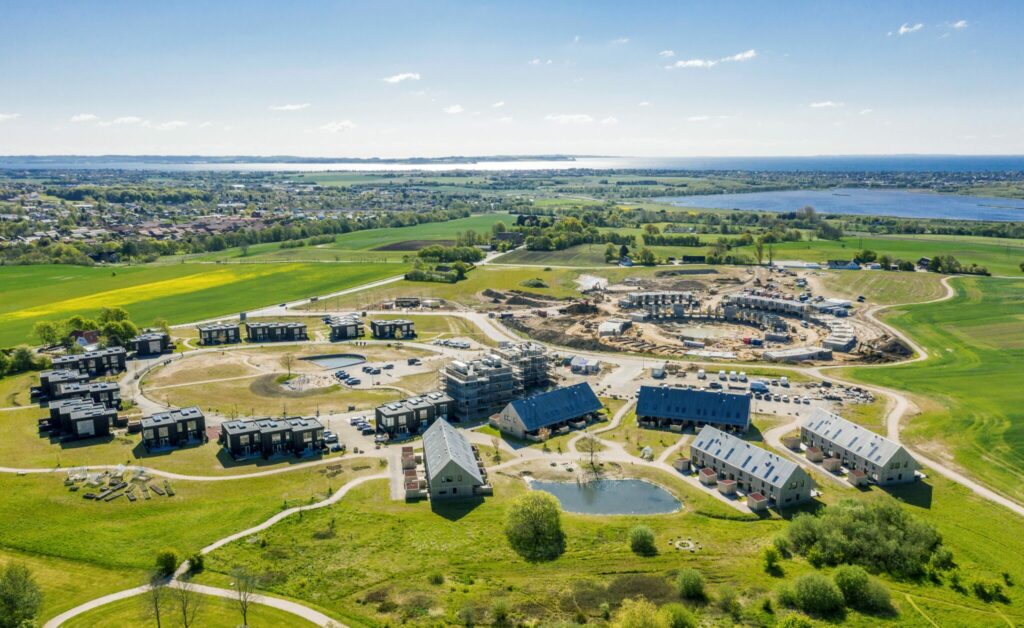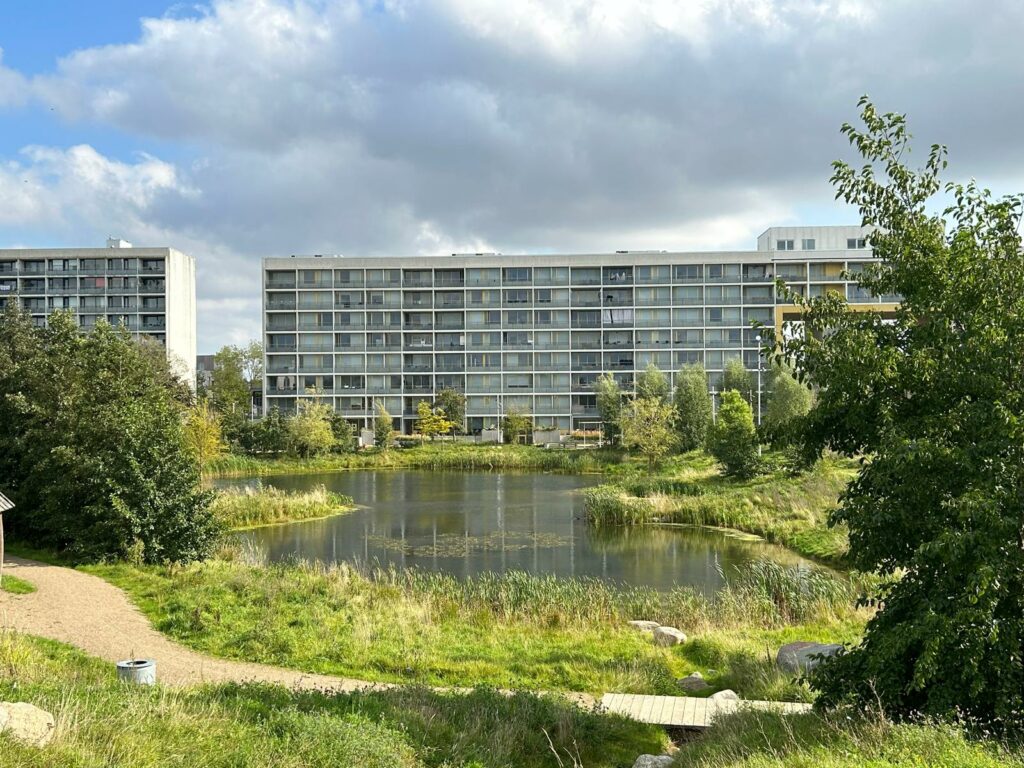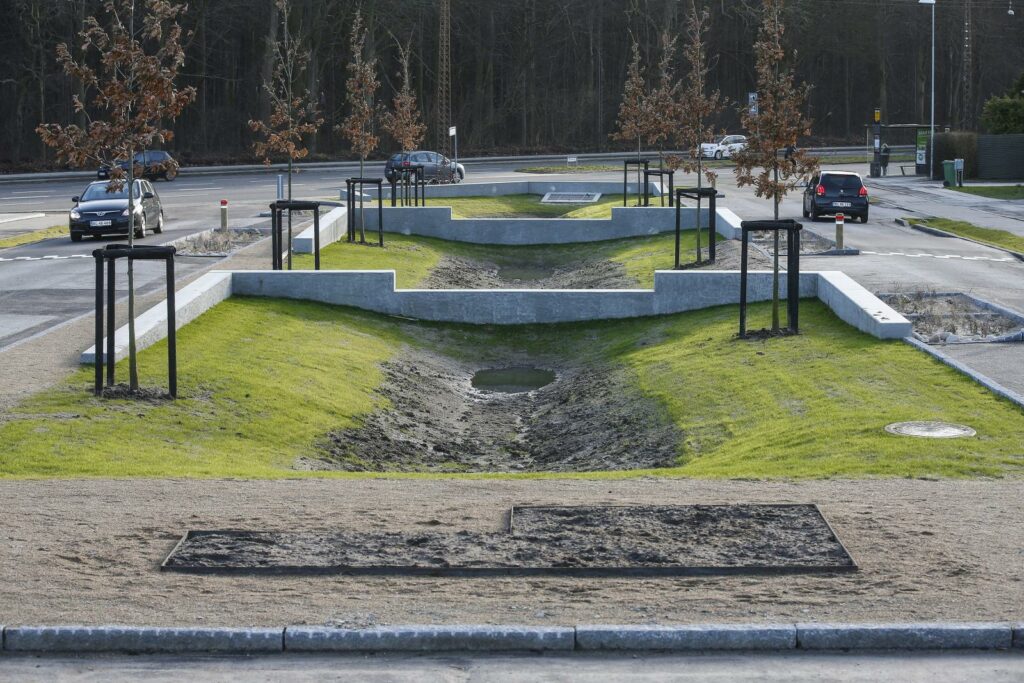This article is part of a series of publications in which stormwater experts from different cities share their cities’ journey in nature-based solutions for stormwater management. The City Blues project has come up with a transition scale which is used as a guideline to help cities describe and measure their progress in implementing nature-based solutions. The scale and descriptions of its stages can be found on the City Blues webpage: D1.3 Critical KPIs for the joint operational model design process.
How did the city become interested in nature-based solutions?
The process began in 2010 when Aarhus in Denmark revised its wastewater plan and made a strategic decision to separate all rainwater from sewage by 2085. This marked a turning point, as the city committed to using nature-based solutions (NBS) as the best available technology to purify rainwater before discharging it into natural recipients. Before that separation was done in some areas, but the planning was not comprehensive.
Implementation started in the outer areas of the city, where conditions were simpler and more manageable. These early projects allowed the city to learn and adapt before moving into more complex, densely built urban areas. Planning was done on a catchment scale, ensuring that sufficient space was allocated for purification and green infrastructure.
Now nature-based solutions visible across Aarhus. Aarhus’s municipal plan has some quite specific guidelines on addressing water flows and flood prone areas and protecting green zones. Aarhus can be seen being near the water cycle city transition stage. Ponds, wetlands, and restored streams are part of this long-term strategy to managing a water cycle city and going beyond that.
What are the benefits of NBS in the city other than the purifying effect?
In areas like the City Blues project’s pilot area, the use of ponds and wetlands has led to increased biodiversity. The goal of combining “more blue with more green” has had a clear ecological impact.
Economic benefits have also been observed. In one of the initial NBS project areas, housing prices rose significantly more than in other parts of the city, as documented in the EU project Invest4Nature. This suggests that NBS can enhance the attractiveness and value of urban areas.
Additionally, recreational value has improved. A popular coastal bathing site that previously suffered from sewage overflows now enjoys excellent water quality year-round, thanks to upstream NBS interventions that reduced pollution.
Are there some challenges in implementing NBS?
There are always challenges, especially when working within an existing city structure. In new development areas, developers often want to build in stages, which makes it difficult to implement large-scale NBS. Instead of one efficient, centralized pond, we risk ending up with five smaller ones that are less effective and harder to maintain.
In older, densely built areas like the city center, there’s simply no space to implement NBS unless redevelopment occurs. These areas are mostly managed by traditional sewage systems, and purification is only possible if we think creatively or secure space during new developments. That’s why we set clear requirements for developers and negotiate purification solutions early in the planning process.
Do you have other examples of stakeholder engagement?
For example, in a development area in western Aarhus, we initiated planning before any construction began. We applied municipal guidelines, mapped flood risks, and identified blue-green corridors where building is not allowed. These areas can be used for stormwater management but must remain green otherwise.
We also work closely with developers to align their building plans with our infrastructure needs. We discuss density, phasing, and ensure that enough space is reserved for rainwater management. These requirements are then integrated into the municipal plan, so developers know from the start what is expected.
Internally, collaboration between departments has improved, but it still requires negotiation and shared understanding. Historically, we’ve had to meet halfway, but legal obligations—like groundwater protection—set clear boundaries that cannot be compromised.
What are some aspects that could be further developed?
One of our main targets is addressing how we work with our streams and correspondence with our city developments to ensure that we maintain or achieve good ecological ecological status. This includes addressing factors like temperature, oxygenation, and speed and pressure of the flow. We’re working to align stream management with city planning to avoid negative impacts.
We’re also focusing on rainwater harvesting to address some of the issues we have in our water abstraction, especially in areas where abstraction sources are contaminated. For example, in the Nye development area, all rainwater is harvested. However, the quite extensive purification process that is required is complex and costly. Smaller-scale harvesting, such as from rooftops, is easier to manage, while runoff from roads and paths requires extensive treatment due to pollutants like oils and other chemicals.

What advice would you give to other cities?
Start small and build from there. Make sure all permissions and planning processes are aligned with local plan and EU directives of storm water. It is easier going from the bottom and up towards the larger scale planning. Also ensure that flood-prone areas are treated correctly and that purification is included from the beginning.


